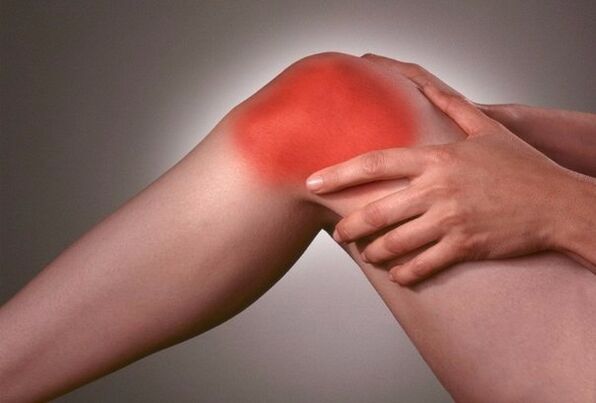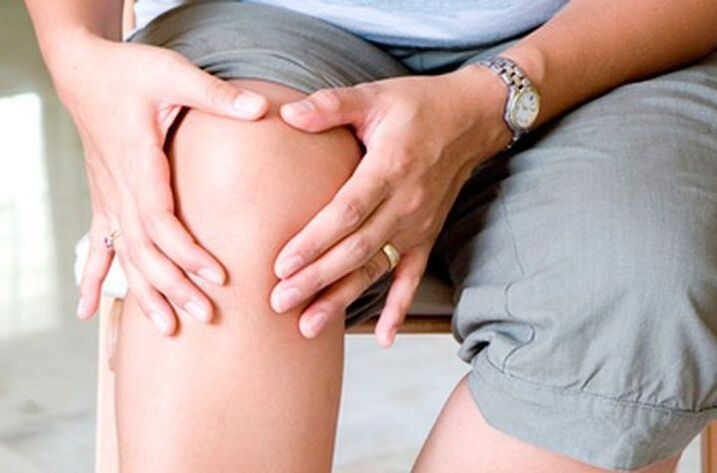
Arthritis means a pathological process characterized by dystrophy and degeneration of articular cartilage. As a rule, the problem is not limited to cartilage - later the pathology spreads to the bony (subchondral) tissue located under the cartilage. Therefore, joint disease is also known as degenerative joint disease. And since all of these disorders ultimately lead to structural changes in the joints, the process is known as degenerative joint deformity, which can affect any joint. In clinical practice, in most cases, knee osteoarthritis or knee osteoarthritis is recorded.
Reality of the disease
In terms of frequency and prevalence, knee osteoarthritis is second only to hip sclerosis (coxarthrosis). To understand what causes this, it is necessary to briefly understand the characteristics of the anatomical structure of the knee and the functions it performs. This is one of the largest joints in which 3 bones are involved - the femur, tibia, and patella. So it is a complex joint formed by 2 joints - the iliac joint and the iliac joint.
The articular surfaces of all three bones are covered with cartilage, which facilitates movement in the joint and protects the subchondral bone tissue from mechanical wear. In addition to the articular cartilage itself, the knee contains cartilages - coupling cartilage formations that strengthen the correspondence (anatomically corresponding) of the articular surfaces. Articular cartilage has no blood vessels of its own. Its nutrition is carried out diffusely from within the joint (synovial fluid). Like a sponge, cartilage contracts under mechanical impact when moving, carrying heavy loads. At this point, waste products are released from the cartilage tissue into the surrounding synovial fluid. On the contrary, at the time of relaxation, rest, synovial fluid and the nutrients contained in it will penetrate into the cartilage of the knee joint.
For a number of reasons, the nutrition of the articular cartilage of the knee joint is disturbed, leading to the condition of knee osteoarthritis. At the same time, at first, there is a deficiency of nutrients in the cartilage tissue - chondroitin sulfate, glucosamine, calcium and other trace elements. Moisture is lost. This is the process of dystrophy, followed by the degeneration - thinning of articular cartilage. In turn, these negative processes lead to structural and movement disorders in the knee joint.
Dry knee disease is often confused with salt deposition disease. Supposedly, some mineral salts, including table salt, are deposited as microcrystals in the joint cavity, leading to pain and movement disorders. This is not the truth. Apparently, a completely different process is carried out for salt deposition. In response to the destruction of articular cartilage in the subchondral bone, marginal growth bone - the bone-forming substance - is formed to stabilize the knee at least to some extent. In the future, however, osteoclasts only exacerbate arthritis, and contribute to continued cartilage destruction.
Reason
Causes of knee osteoarthritis are very diverse, may be due to the disease of the knee joint itself, or other diseases and metabolic disorders. In this regard, gonarthrosis can be primary and secondary. The mechanism of primary arthropathy is still not fully understood. It is believed that in this case, the disease was caused by a combination of factors, including:
- Advanced age, when degenerative changes occur not only in articular cartilage, but also in all organs and tissues;
- Being overweight, which increases mechanical stress on the joints;
- Lack of physical activity, or conversely, excessive physical activity;
- Certain congenital anatomical disorders of the knee joint, in which articular cartilage and subchondral bone are initially altered;
- Metabolic disorders generally lead to changes in the mineral composition of synovial fluid.
Secondary knee osteoarthritis is a complication of other diseases. Most often, such diseases are arthritis of various natures - gout, rheumatic diseases, rheumatic diseases, infections, tuberculosis, etc. v. In these diseases, various pathological factors (infections, metamorphic immune reactions, uric acid crystals) form synovitis in the form of the so-called. synovial membrane inflammation. Bursitis is necessarily accompanied by a deterioration in the quality of the synovial fluid, which, in turn, leads to joint dryness.
Another common cause of dry joints is a knee injury. Posttraumatic knee osteoarthritis is the result of fractures in the femur and tibia, sequelae (joint hemorrhage), and damage to the knee ligaments and meniscus. Here, the pathology is based on a mechanical factor (injury) and the damage that develops after it (arthritis). In addition, osteoporosis is often accompanied by dry joints. A deficiency of calcium in the bones entails the destruction of not only bone, but also cartilage tissue.
Symptom

The main symptoms of osteoarthritis of the knee joint:
- Pain;
- Impaired knee movement;
- Difficulty walking;
- Cracking sound when moving;
- First - pathological stress, and then - muscle atrophy of the lower extremities;
- Deformity of the knee joint.
Initially, as a rule, the pelvic joint suffers, taking up most of the functional load. In general, knee pads with arthritis are probably the most vulnerable. It is from the cartilage of the kneecap that the dystrophic changes begin in arthropathy. Clinically, the presentation is swelling and pain when this bone is palpated. As a result of dystrophic changes, articular cartilage undergoes sclerotic changes - it loses its elasticity and is replaced by coarse connective tissue.
Subsequently, the articular sac and the ligamentous apparatus undergo sclerotic changes. The configuration of the joint changes. Initially due to joint inflammation and swelling, inflammation. Then, with the process of degeneration and progressive sclerosis, the amount of joint fluid decreases sharply, the joint space is narrowed, inevitably leading to movement disorders. At first, the gait was difficult, the limbs were tight. Then ankylosing spondylitis develops - the knee is completely immobilized, and as a result the muscles of the thigh and lower leg are atrophied. All these changes will take shape over a long period of time. In this regard, there are 3 degrees of osteoarthritis:
- Grade 1 knee osteoarthritis. The pain is localized mainly in the kneecap area and along the inner surface of the knee joint. Pains are "initiating" - they appear at the beginning of movement, then subside. In addition, the pain may appear with great exertion (long walking, heavy lifting) and disappear after rest. There are no structural changes in the joint at this stage.
- Grade 2 Knee Osteoarthritis. The pain can occur even at rest and lasts longer. Limited range of motion (spasticity) occurs in the knee. The patient limps and has to move with a walking stick. Inflammatory and dystrophic changes in the joint are formed, externally manifested by an increase in the knee joint due to edema.
- Grade 3 Knee Osteoarthritis. Severe knee pain that doesn't stop even after long-term rest. Severe and irreversible disorders in the structure of the joint, leading to the ankle joint and loss of mobility. Changes in the configuration of the entire lower limb, manifested by its valgus or varus (O- or X-shaped) curvature.
The diagnosis of knee osteoarthritis is made on the basis of the above symptoms and complaints of the patient, as well as radiographic data (arthroscopic stenosis, osteoporosis, osteoporosis, bone stiffness). Gonarthrosis is complexly treated with the use of drugs and physical procedures. With grade 3 osteoarthritis, surgical intervention is indicated, in which various types of knee arthroplasty are performed.















































